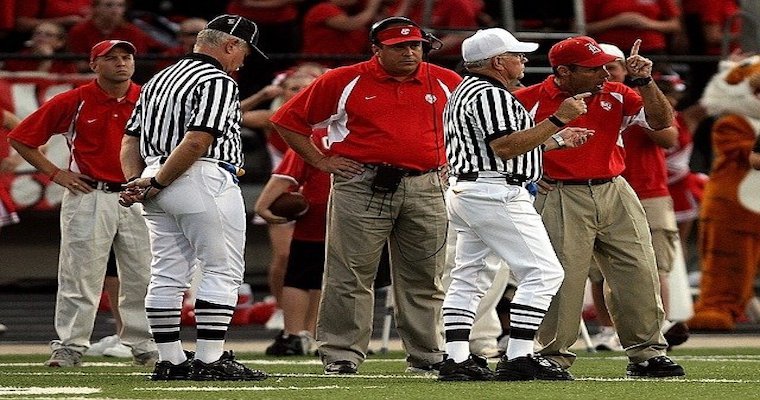
When you think about influential leaders in sport, we can think of a few in every sport: basketball, football, American football, hockey, rugby, Gaelic games and many more. And when most people think about a pep talk before or during a game, the angry or disappointed manager or coach seems to stir great intensity and motivation for the second half. Research and conventional wisdom in the workplace suggest few employees feel empowered by displays of disappointment and anger. So if a football player or basketball player is in her workplace, how might such experiences translate?
The coach or manager might display these unpleasant emotions through word, facial expression, physical gesture and other means. In the workplace, such displays coincide with low ratings of effectiveness of a leader and lower task performance. But an exciting and unexpected turn around in sport suggests that there is a potential upside to these displays of unpleasant feelings. We all hear about world-renowned coaches whom we now know because of their harsh criticism of their players, so perhaps there is more going on here. Sir Alex Ferguson and the ‘hair-dryer’ displays of dissatisfaction are legendary; but maybe Sir Alex had read the research in sport and organisational psychology. Research suggests that such unpleasant emotional displays may induce greater effort and enhance team performance.
The emotions as social information (EASI) model offers a sound explanation that such unpleasant affective displays inform the group or team that their performance does not meet the standards we expect and that more effort now can change the course of the game or performance. This paradox does not seem to make sufficient sense because such negative affective displays are helpful and unhelpful.
Staw and colleagues suggest it is the intensity of these emotional displays that matters. When you think about it, the half-time team talk in a cup ultimately means that there is but one half left to salvage the fortunes of the team. Acting now is vital. But such unpleasant emotional displays at the beginning of a season might engender unhelpful feelings and responses that do not serve the manager or team well. According to Staw and colleagues, at moderate intensity, unpleasant emotional displays can redirect teams’ attention to problems and solutions to improve performance. High-intensity displays, however, might direct a team’s attention away from the problem and resolutions which decreases performance. When we think about people, we often think about their personality and their displays rather than their emotional intensity. When a team has many members’ high in epistemic motivation (a strong desire to understand the situation) and low in agreeableness, they seem to perform better under leaders who display unpleasant feelings (anger) rather than pleasant feelings (happiness).
Two points are critical here for teams and managers wishing to succeed and continue succeeding. First, knowing the personality composition of a team or squad helps to understand their general ways of thinking, feeling and acting. Second, the emotional experiences of a group also matter, especially how emotions spread among and within the group. Getting the intensity of feeling right for the right teams could make all the difference to a team’s fortunes. A sport psychologist in this team setting works gather this vital information as a matter of course and have much to offer the manager wishing to win when it matters most.
Reference
Staw, B.M., DeCelles, K.A. & de Goey, P. 2019, "Leadership in the locker room: How the intensity of leaders’ unpleasant affective displays shapes team performance", Journal of Applied Psychology, 104, 12, 1547-1557.
Image by Keith Johnston from Pixabay
